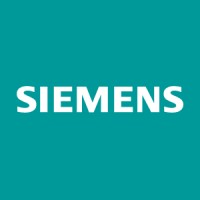System Interface Manager – Kavach Product Development

Siemens
Define and manage technical interfaces for the Kavach ATP product development.
6 days ago ago
Experienced (8-12 years)
Full Time
Bengaluru, Karnataka, India
Hybrid
Company Size
303,000 Employees
Service Specialisms
Industry Automation
Power Transmission
Imaging & Therapy Systems
Diagnostics
Rail Systems
Mobility & Logistics
Low & Medium Voltage
Smart Grid
Sector Specialisms
Industrial Automation
Building Automation
Rail Transport
Health Technology
Factory Automation
Process Industries
Pharmaceuticals
Chemicals
Role
What you would be doing
interface control
v&v strategies
requirements management
integration planning
stakeholder coordination
status reporting
- Stakeholder & Vendor Coordination: Act as the single point of contact for interface-related issues with internal teams, suppliers, and Indian Railways stakeholders.
- Ensure interface traceability throughout the system lifecycle in compliance with EN 50126/8/9 and Indian Railway standards.
- Collaborate with engineering teams during lab testing, field validation, and commissioning phases.
- Define and supervise interface verification & validation (V&V) strategies, ensuring compliance with SIL-4 safety integrity requirements.
- Requirements & Change Management:Capture, analyse, and validate interface-related requirements from customer, regulatory, and operational inputs.
- Manage interface change requests, impact assessments, and configuration control.
- Interface Definition & Control: Develop, document, and maintain Interface Control Documents (ICDs) covering onboard, trackside, and cross-vendor interfaces.
- Support preparation of safety cases, hazard logs, and compliance documentation for independent safety assessment (ISA) and RDSO approval.
- Ensure interoperability between Kavach onboard and trackside systems, and compatibility with third-party solutions.
- Provide regular reporting on interface status, risks, and dependencies to project management.
- Ensure interface designs adhere to relevant functional safety standards (EN 50126, EN 50128, EN 50129, EN 50159).
- Drive technical discussions to resolve interface conflicts and risks.
- Safety & Compliance: Collaborate with safety teams to identify and mitigate interface-related hazards.
- Manage interface baselines and ensure alignment with evolving system architecture.
- Integration & Verification: Support integration planning and execution for subsystem and system-level interfaces.
- Define interface requirements and ensure consistency across hardware, software, and communication subsystems.
What you bring
bachelor's
cenelec
atp/etcs
doors
5+ years
railway signalling
- Strong communication skills to manage diverse stakeholders.
- Bachelor’s or master’s degree in electrical, Electronics, Systems Engineering, Computer Science, or Railway Engineering (or equivalent).
- Ability to manage dependencies across multiple technical domains.
- Knowledge of train-to-trackside communication protocols and interoperability requirements.
- Strong understanding of ATP/ETCS/CBTC system interfaces and integration challenges.
- Proven track record in managing subsystem interfaces in complex, safety-critical projects.
- Expertise in CENELEC EN 50126/50128/50129/50159 standards.
- Excellent coordination, negotiation, and conflict resolution abilities.
- Minimum 5 years of experience in system engineering or interface management roles.
- Experience with requirements management and configuration tools (e.g., DOORS, JIRA).
- 8–12 years of experience in railway signalling, ATP, ETCS, CBTC, or other safety-critical system development.
- Familiarity with RAMS, hazard analysis, and safety verification practices.
Information not given or found
Training + DevelopmentInformation not given or found
Interview process
Information not given or found
Visa SponsorshipInformation not given or found
Security clearanceInformation not given or found
Company
Overview
Founded in 1847
Historical Milestone
Established as a small telegraph company and transformed into a global leader in technology.
- The company drives progress with solutions in electrification, automation, and digitalization across industries.
- With cutting-edge products and services, it leads sustainable innovation for industries like energy, manufacturing, and infrastructure.
- Its impressive portfolio includes smart grids, automated factories, advanced healthcare technologies, and solutions for urban mobility.
- Siemens’ digital solutions enhance efficiency and sustainability in everything from smart buildings to electric vehicles.
- It has contributed to iconic projects, including energy-efficient train systems and automation in key industrial sectors.
- Transforming how industries use digital technology to optimize operations and tackle global challenges.
- Leading change is a team effort
- Our people are enthusiasts with diverse backgrounds, skills and interests
- Every individual is valued
- Ownership – empowering employees to take responsibility
- Collaboration – leveraging unique strengths to find creative solutions
- Respect & Inclusion – diverse, respectful, flat hierarchies, flexibility, celebrating individual contributions
90% reduction
Scope 1 & 2 emissions by 2030
Achieve a 90% reduction in own-operations greenhouse gas emissions compared to 2019 levels by 2030.
144 million tonnes
CO₂-equivalent avoided in FY 2024
Products sold in FY 2024 helped customers avoid approximately 144 million tonnes of CO₂-equivalent emissions.
100% renewable
Electricity by 2030
Transition to 100% renewable electricity across operations by 2030, aligned with the RE100 initiative.
90% reduction
Scope 3 emissions by 2050
Achieve a 90% reduction in value-chain (Scope 3) emissions by 2050, validated by the Science-Based Targets initiative.
- Achieve net‑zero greenhouse‑gas emissions across the value chain by 2050
- Own‑operations net‑zero by 2030
- Value‑chain (Scope 3) target: 30% reduction by 2030
- €650 million invested in decarbonization efforts by 2030
- 100% EV fleet (EV100) by 2030
- 100% net‑zero buildings (EP100) by 2030
- Scope 1 & 2 emissions reduced by 50% since 2019, Scope 3 by 15% since 2019
- Products sold in FY 2024 helped customers avoid ~144 million tonnes CO₂‑equivalent
- Eco‑design standard achievement: 54%; 25,000 Siemens products labeled “EcoTech” for sustainable design
- Landfill waste down ~12%; recycling share of total waste 84%
Women at 32%
Top Management Increase
Women in top management roles increased significantly from a baseline of 23% in FY 2020 to 32% in FY 2024.
- DEGREE strategic framework includes 'Equity' as a measurable field of action
- Global Equity program focuses on equal rights in hiring and internal promotion processes
- SBTi‑validated targets exclude DEI but inclusion embedded in governance and career development

Kablio AIIf you're someone who helps build and power the world (or dreams to), Kablio AI is your pocket-sized recruiter that gets you hired.
Copyright © 2025 Kablio